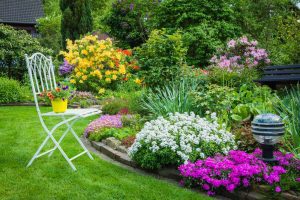Harmonizing with nature to produce inspiring and rejuvenating settings is the goal of transformative landscaping and gardening. This handbook explains how anybody may start this transformational journey by exploring its concepts and practices.
Understanding the Vision: Your Ideal Space
Transformative landscaping and gardening revolve around the perfect outside setting. Whatever it is—a peaceful garden retreat or a lively community space—clarifying this idea is the core of the process. Consider how you want your area to appear and feel.
Welcoming Diversity: Choosing Flora
A dynamic and resilient landscape requires diversity. Choose local climates and soil-adapted plant species. Color, texture, and bloom time give your garden year-round appeal and ecological balance.
Integrating Nature: Land Use
Transformative landscaping uses the site’s natural characteristics instead of imposing construction. Allow the topography, trees, and water elements to blend into your design. This method creates harmony and authenticity in the environment.
Sustainable Practices: Environmental Care
Sustainable gardening is vital for environmental protection. Composting, rainwater gathering, and organic pest management reduce your environmental impact. You help the ecology by caring for the soil and resources.
Habitat: Biodiversity Support
Transformative landscapes provide animals with habitat and food. For beneficial species, use native plants and habitat elements like bird feeders, bee hotels, and butterfly gardens. Having a healthy ecology makes your garden beautiful and vibrant.
Design Art: Form and Function Balance
Creating a transforming environment is like making art alive. Balance beauty with utility, ensuring each piece has a purpose and enhances the environment. Create astonishment and joy with diverse layouts and focus points.
Seasonal Change: Accepting Change Yearly
Seeing the seasons change is a thrill of transforming gardening. Plan a year-round symphony of colours and textures in your garden with blossoms and greenery. Enjoy seeing your garden change with the seasons.
Nurturing Community Connection and Collaboration
Transformational landscapes encourage community and connection. To involve neighbours and gardening enthusiasts, provide seminars, volunteer days, and garden tours. Sharing information boosts your effect and encourages others to join the cause.
Reflecting and Adapting: Experience-Based Learning
Be open to learning and adapting as you alter your landscape and gardening. Consider how your garden changes and how you might meet its demands. Accept problems as learning opportunities, and appreciate your outdoor sanctuary’s evolution.
Conclusion
Blossoming Horizons guides the construction of inspiring, nurturing, and sustainable environments. By celebrating variety, honouring the soil, and building community, you can create beautiful, harmonious settings that benefit people and the world. With an open heart and a green thumb, watch your environment grow to match your vision and ideals.



